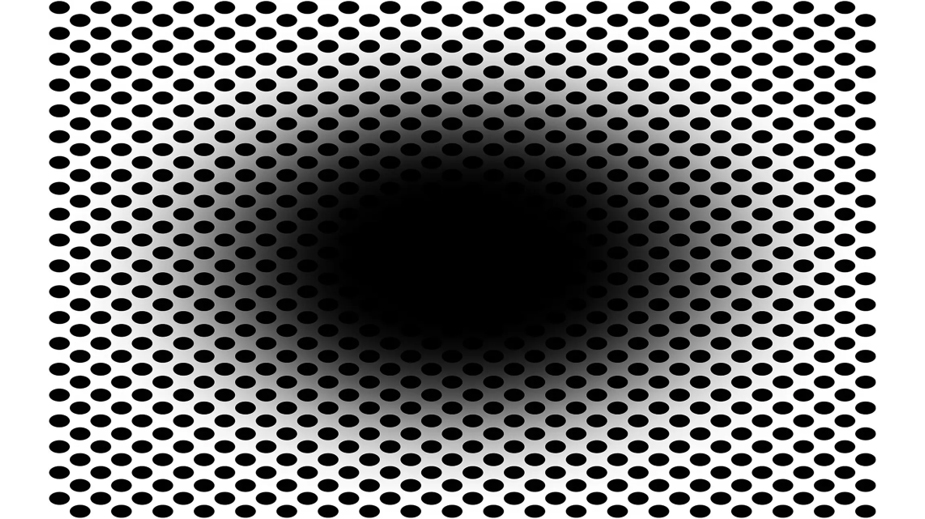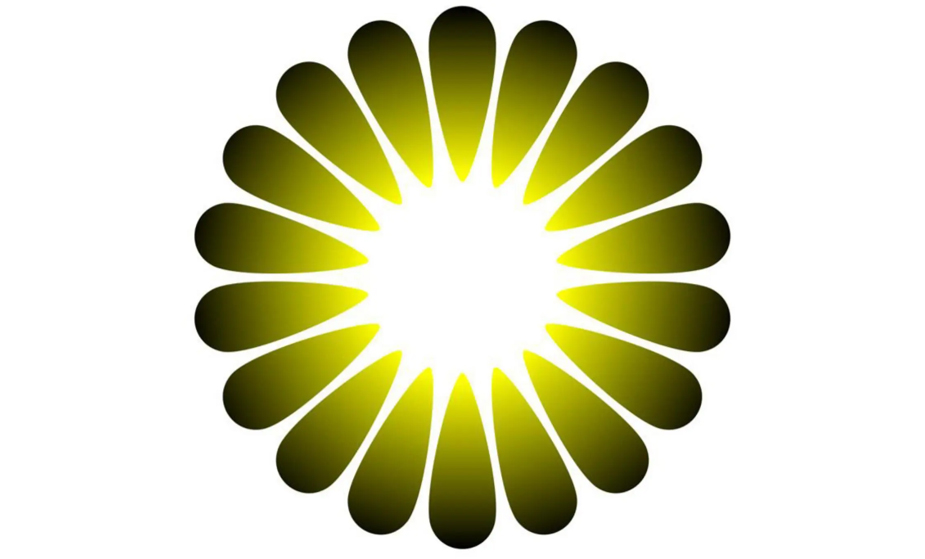A research study published in Frontiers in Human Neuroscience revealed more about the eye-brain connection. Fifty subjects viewed optical illusions that evoked the perception of an expanding black hole, as compared to those that appeared in a previous study as an increase in brightness and tracked pupillary responses. (Front. Hum. Neurosci., 30 May 2022 Sec.Sensory Neuroscience, https://doi.org/10.3389/fnhum.2022.877249)
The expanding black hole illusion elicits a sense of forward motion. (Fig. 1) The brain perceives that the viewer is entering an area of decreased light that triggers pupillary dilation. What’s more, the greater the subject’s perception of black hole expansion, the greater was the pupillary dilation. (Note: Not everyone can see the illusions. Seven participants did not see the black hole expand or exhibit similar pupillary responses to those who reported seeing expansion.) Conversely, the authors cited a 2012 study in which an image evoked the perception of increasing brightness that corresponded to pupillary constriction. (Fig. 2)
 |
| Figure 1 Expanding black hole (Laeng B, Nabil S and Kitaoka A (2022) The Eye Pupil Adjusts to Illusorily Expanding Holes. Front. Hum. Neurosci. 16:877249. doi: 10.3389/fnhum.2022.877249) |
 |
| Figure 2 Brightness illusion (Laeng B, Nabil S and Kitaoka A (2022) The Eye Pupil Adjusts to Illusorily Expanding Holes. Front. Hum. Neurosci. 16:877249. doi: 10.3389/fnhum.2022.877249) |
Why would the eye respond to a static image that couldn’t possibly have changing levels of light? The researchers hypothesize that the pupillary responses are adaptive in anticipation of a changing environment. For example, with the perception of moving forward from light into darkness, the brain anticipates that in the 100 milliseconds it takes to receive and process new visual information, we will be in an area of even more darkness, prompting a pre-emptive pupil dilation response. Having as much available light as possible enter the eye in a dark environment enables us to better navigate that space safely. In the case of perceived increasing brightness, researchers compared the illusion to the glare of bright sunlight as seen through tree leaves or cloud formations. In those instances, pupil constriction, in addition to enhancing vision by limiting glare, protects the retina from excessive light exposure.
While pupillary reaction to real changes in light and darkness is protective and beneficial, in the case of optical illusion, those changes aren’t actually happening. Is there a consequence to this misperception? The researchers speculate that the answer is no. They state, “a pupil adjustment to the dynamic illusion would suggest optimal adaptation to an ecological regularity, instead of an “inappropriate” perceptual strategy or a failure in information processing” in a real-life situation.
This and similar studies emphasize that the eye is not a camera because our visual perception depends on how the brain interprets images from the eye. This interpretation is based on anticipation, experience, memory, adaption, evolution, and likely much more. In other words, for our visual reality, the eye provides, the brain decides.
Learn more about vision and take advantage of our CE Summer Sale at 2020mag.com/ce. All CE courses are buy one, get one free with the code CESummerSale at checkout.













